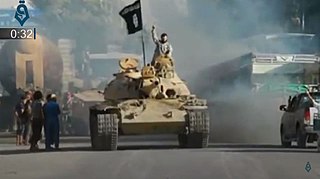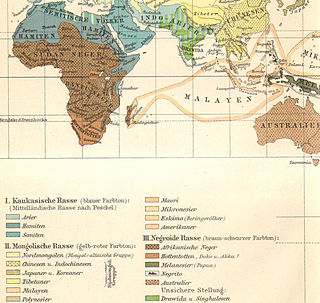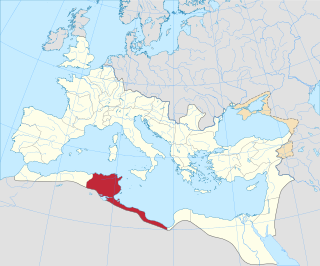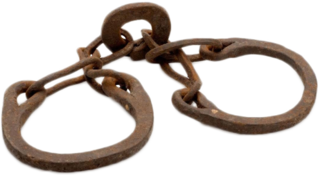 W
WNorth Africa is a relatively thin strip of land between the Sahara desert and the Mediterranean, stretching from Moroccan Atlantic coast to Egypt. Currently, the region comprises five countries, from west to east: Morocco, Algeria, Tunisia, Libya and Egypt. The region has been influenced by many diverse cultures. The development of sea travel firmly brought the region into the Mediterranean world, especially during the classical period. In the 1st millennium AD, the Sahara became an equally important area for trade as camel caravans brought goods and people from the south. The region also has a small but crucial land link to the Middle East, and that area has also played a key role in the history of North Africa.
 W
WThe 2018–2021 Arab protests, also referred to as the Second Arab Spring and Arab Summer are massive anti-government protests in several Arab countries, including Morocco, Tunisia, Jordan, Sudan, Algeria, Egypt, Iraq, Lebanon, and Syria. Economic protests also took place in the Gaza Strip.
 W
WThe Achaemenid Empire, also called the First Persian Empire, was an ancient Iranian empire based in Western Asia founded by Cyrus the Great. Ranging at its greatest extent from the Balkans and Eastern Europe proper in the west to the Indus Valley in the east, it was larger than any previous empire in history, spanning 5.5 million square kilometers. It is notable for its successful model of a centralised, bureaucratic administration, for its multicultural policy, for building infrastructure such as road systems and a postal system, the use of an official language across its territories, and the development of civil services and a large professional army. The empire's successes inspired similar systems in later empires.
 W
WThe Arab Spring was a series of anti-government protests, uprisings, and armed rebellions that spread across much of the Arab world in the early 2010s. It began in response to oppressive regimes and a low standard of living, starting with protests in Tunisia. From Tunisia, the protests then spread to five other countries: Libya, Egypt, Yemen, Syria, and Bahrain, where either the ruler was deposed or major uprisings and social violence occurred including riots, civil wars, or insurgencies. Sustained street demonstrations took place in Morocco, Iraq, Algeria, Iranian Khuzestan, Lebanon, Jordan, Kuwait, Oman, and Sudan. Minor protests took place in Djibouti, Mauritania, Palestine, Saudi Arabia, and the Moroccan-occupied Western Sahara. A major slogan of the demonstrators in the Arab world is ash-shaʻb yurīd isqāṭ an-niẓām.
 W
WThe Arab Winter is a term for the resurgence of authoritarianism, and Islamic extremism evolving in the aftermath of the Arab Spring protests in Arab countries. The term "Arab Winter" refers to the events across Arab League countries in the Mid-East and North Africa, including the Syrian Civil War, the Iraqi insurgency and the following civil war, the Egyptian Crisis, the Libyan Crisis and the Crisis in Yemen. Events referred to as the Arab Winter include those in Egypt that led to the removal of Mohamed Morsi and the seizure of power by General Abdel Fattah el-Sisi in an anti-Muslim Brotherhood campaign.
 W
WThe Aterian is a Middle Stone Age stone tool industry centered in North Africa, but also possibly found in Oman and the Thar Desert. The earliest Aterian dates to c. 145,000 years ago, at the site of Ifri n'Ammar in Morocco. However, most of the early dates cluster around the beginning of the Last Interglacial, around 150,000 to 130,000 years ago, when the environment of North Africa began to ameliorate. The Aterian disappeared around 20,000 years ago.
 W
WThe Ayyubid dynasty was a Sunni Muslim dynasty of Kurdish origin, founded by Saladin and centered in Egypt, ruling over the Levant, Mesopotamia, Hijaz, Nubia and parts of the Maghreb. The dynasty ruled large parts of the Middle East during the 12th and 13th centuries. Saladin had risen to vizier of Fatimid Egypt in 1169, before abolishing the Fatimid Caliphate in 1171. Three years later, he was proclaimed sultan following the death of his former master, the Zengid ruler Nur al-Din and established himself as the first custodian of the two holy mosques. For the next decade, the Ayyubids launched conquests throughout the region and by 1183, their domains encompassed Egypt, Syria, Upper Mesopotamia, the Hejaz, Yemen and the North African coast up to the borders of modern-day Tunisia. Most of the Crusader states including the Kingdom of Jerusalem fell to Saladin after his victory at the Battle of Hattin in 1187. However, the Crusaders regained control of Palestine's coastline in the 1190s.
 W
WNote:"Modern" is defined as post-WWI period, from 1918 until today. "North Africa" has a definition approximately that of the Arab term `Maghreb`. "Conflict" is defined as a separate 100+ casualty incident. In all cases conflicts are listed by total deaths, including subconflicts.
 W
Wel-Djerid, al-Jarīd or more precisely the South Western Tunisia Region is a semi-desert natural region comprising three southern Tunisian Governorates, Gafsa, Kebili and Tozeur with adjacent parts of Algeria and Libya.
 W
WThe Fatimid Caliphate, an Ismaili Shia caliphate of the 10th to the 12th centuries AD, spanned a large area of North Africa, from the Red Sea in the east to the Atlantic Ocean in the west. The Fatimid dynasty, of Arab origin, ruled territories across the Mediterranean coast of Africa and ultimately made Egypt the center of the caliphate. At its height the caliphate included - in addition to Egypt - varying areas of the Maghreb, Sudan, Sicily, the Levant, and the Hijaz.
 W
WFrench North Africa is the term often applied to the territories controlled by France in the North African Maghreb during the colonial era. It encompassed French Algeria, Morocco and Tunisia. Unlike French West Africa and French Equatorial Africa, which existed as federations of French colonies and administrative entities in their own right, French North Africa was never more than a term of convenience to refer to the three separately governed territories.
 W
WHamites is the name formerly used for some North African peoples in the context of a now-outdated model of dividing humanity into different races which was developed originally by Europeans in support of colonialism and slavery. The term was originally borrowed from the Book of Genesis, where it is used for the descendants of Ham, son of Noah.
 W
WLibertina was a town of the Roman province of Byzacena in North Africa during the Roman Empire. The town is tentatively identified with ruins near Souc-El-Arba, Tunisia.
 W
WPræsidium also known as Praesidium Diolele was a town of the Roman Province of Byzacena in North Africa during the Roman Empire.
 W
WThe Prehistory of North Africa spans the period of earliest human presence in the region to gradual onset of historicity in the Maghreb (Tamazgha) during classical antiquity.
 W
WThe Sanhaja were once one of the largest Berber tribal confederations, along with the Zanata and Masmuda confederations. Many tribes in Morocco, Western Sahara and Mauritania bore and still carry this ethnonym, especially in its Berber form. Other names for the population include Zenaga, Znaga, Sanhája, Sanhâdja and Senhaja.
 W
WDuring the Trans-Saharan slave trade, slaves from West Africa were transported across the Sahara desert to North Africa to be sold to Mediterranean and Middle eastern civilizations. It was part of the Trans-Saharan trade. Early records of trans-Saharan slave trade come from ancient Greek historian Herodotus in the 5th century BC.
 W
WThe Umayyad Caliphate was the second of the four major caliphates established after the death of Muhammad. The caliphate was ruled by the Umayyad dynasty. The third caliph of Rashidun Caliphate, Uthman ibn Affan, was also a member of the Umayyad clan. The family established dynastic, hereditary rule with Muawiya ibn Abi Sufyan, long-time governor of al-Sham, who became the sixth caliph after the end of the First Muslim Civil War in 661. After Mu'awiyah's death in 680, conflicts over the succession resulted in a Second Civil War and power eventually fell into the hands of Marwan I from another branch of the clan. The region of Syria remained the Umayyads' main power base thereafter, and Damascus was their capital.
 W
WThe Mediterranean and Middle East Theatre was a major theatre of operations during the Second World War. The vast size of the Mediterranean and Middle East theatre saw interconnected naval, land, and air campaigns fought for control of the Mediterranean, North Africa, the Horn of Africa, the Middle East and Southern Europe. The fighting in this theatre lasted from 10 June 1940, when Italy entered the war on the side of Germany, until 2 May 1945 when all Axis forces in Italy surrendered. However, fighting would continue in Greece – where British troops had been dispatched to aid the Greek government – during the early stages of the Greek Civil War.